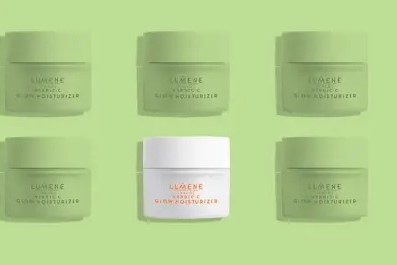 Just as good, only better: wood-based cosmetics packaging passes a rigorous screening process
Just as good, only better: wood-based cosmetics packaging passes a rigorous screening process
What have they made from wood this time?In autumn 2023, Finnish cosmetics company Lumene launched a moisturiser packaged in a bio-attributed* jar. The jar utilises a wood-based plastic raw material made from crude tall oil, a residue from pulp production. It is reportedly the first cosmetics jar that includes renewable materials in both the packaging and label.
In the first phase, Lumene's Nordic-C [Valo] range of moisturisers will be packaged in this new type of jar. In the future, Lumene's entire range of 50 ml moisturisers will be packaged in a new bio-attributed jar. These are also the company's best-selling products.
Why do we need a new kind of jar?
Reducing the dependency on fossil raw materials is a global challenge across many industries. For example, every year, the global cosmetics industry produces more than 120 billion containers. Many consumers are on the hunt for products with the lowest possible environmental impact, and industries are searching for raw materials to fulfil that need.
Lumene has been looking for a more sustainable packaging material for a long time. The company's goal is that by 2025, just over a year from now, 80% of its product packaging will be made from recycled or bio-based plastics. Lumene sells around 1.5 million moisturisers every year.
In the future, all of Lumene's most popular moisturisers will be packaged in a bio-attributed jar.
Why is fossil plastic increasingly being replaced in cosmetics?
Finding the right materials involves great effort along value chain. Cosmetics packaging must be absolutely clean and the product must remain fresh for a long time.
The search for alternative packaging solutions that meet Lumene's quality and sustainability criteria has been challenging. The company is pleased that a suitable partner was finally found at home in Finland.
The moisturiser jars utilise a wood-based plastic raw material made from crude tall oil, being produced in Lappeenranta in the East of Finland. Crude tall oil is a residue from UPM's pulp production. The quality and other properties of the packaging are fully equivalent to those of conventional plastics, leading to a significant reduction of fossil resources.
The new packaging is 97% originated from wood. Only the seal of the lid still contains fossil-based plastic. No suitable renewable alternative for the seal has been found so far.
The quality and other properties of the packaging are fully equivalent to those of conventional plastics, leading to a significant reduction of fossil resources.
Where and how is it produced?
Crude tall oil is a natural wood extractive that is produced as a residue during the pulp production process. Crude tall oil is turned into advanced biofuels and biomaterials, such as wood-based diesel and naphtha, at UPM's biorefinery in Lappeenranta.
A significant part of the raw material comes from UPM's own pulp mills in Finland, such as the Kaukas mill close to the refinery. The use of residue-based crude tall oil in the production of biofuels and bio-based raw materials does not increase wood consumption.
In the manufacturing process for the moisturizer packaging, the chemical company Sabic produces recyclable bio-attributed polypropylene from crude tall oil based naphtha. In order to trace the flow of materials in the value chain, they are utilising an approach called mass balance accounting*. Polypropylene is then used to make packaging for Lumene. UPM Raflatac, a producer of labels and stickers, also utilises naphtha for package labelling.
*Mass balance accounting is a well-known approach that has been designed to trace the flow of materials through a complex value chain. The mass balance approach provides a set of rules for how to allocate the bio-based and/or recycled content to different products to be able to claim and market the content as "bio-attributed" or "recycled-based".
